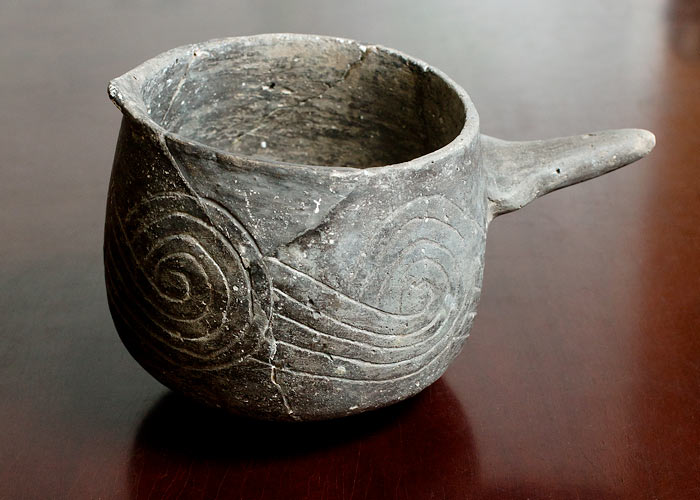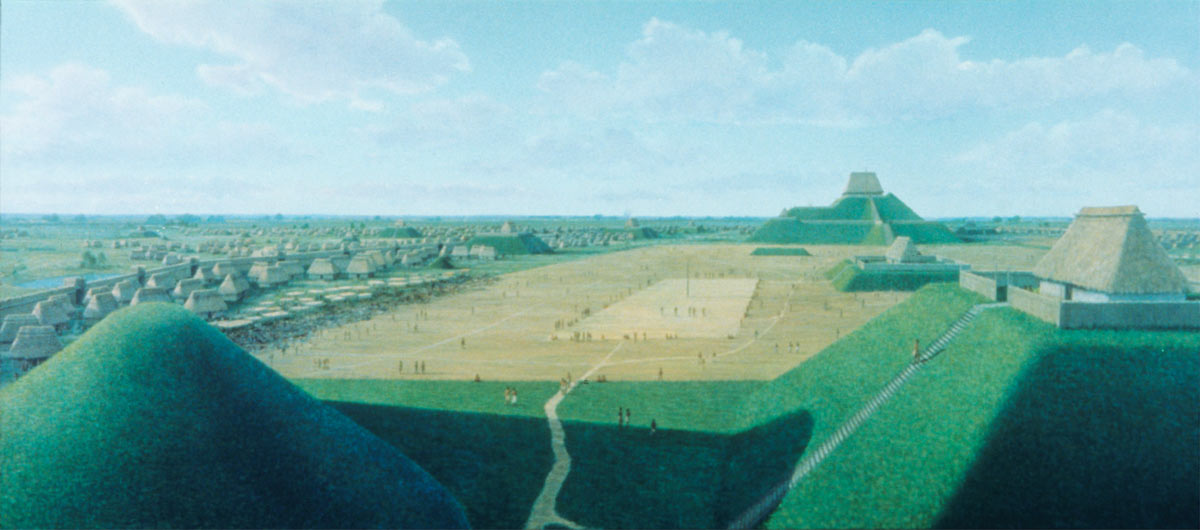Caffeinated 'Vomit Drink' Nauseated North America's First City

Caffeine-loaded black drinks apparently dominated the heartland of America earlier than once thought — a beverage neither coffee nor cola, but instead brewed from holly leaves, researchers say.
The ancient people may have downed the brew before ritual vomiting as part of purification ceremonies, the scientists added.
The discovery was made after investigating artifacts from Cahokia, "North America's first city," researcher Thomas Emerson, the director of the Illinois State Archaeological Survey, told LiveScience.
Cahokia existed near the confluence of the Missouri and Mississippi Rivers from about 1050 to 1350 in what is now in St. Louis, East St. Louis and the surrounding five counties, and inspired short-lived settlements as far away as Wisconsin. The core of this society, Greater Cahokia, had as many as 50,000 residents in its heyday living amidst earthen mounds, some more than 100 feet (30 meters) in height, making it the largest prehistoric North American settlement north of Mexico.
Even after decades of research, archaeologists are at a loss to explain the sudden emergence of Greater Cahokia and its rapid decline, but its influences on art, religion and architecture are seen as far away as Alabama, Arkansas, Louisiana and Wisconsin, Emerson said.
Brew beakers
Archaeologist Patricia Crown at the University of New Mexico and chemist Jeffrey Hurst at the Hershey Technical Center in Pennsylvania analyzed plant residues in eight mug-shaped pottery beakers from Greater Cahokia and its surroundings. They found signs they once held "black drink," a caffeinated brew made from the toasted leaves of the Yaupon holly (Ilex vomitoria) that grew more than 300 miles (480 kilometers) to the south.
Get the world’s most fascinating discoveries delivered straight to your inbox.
"We're not sure when Native Americans stopped using black drink," Emerson said. "I think its use went more into the closet, due to pressure from Europeans to drop pagan practices."
For many tribes of Native Americans, the black drink was a key component of purification rituals before war parties, religious ceremonies, important political councils or other important events. Rapid consumption of large quantities of the hot drink preceded ritual vomiting as part of the purification rituals. People in South America continue to make drinks from varieties of holly, such as yerba maté and té o' maté, albeit in more relaxed contexts. [Top 10 Extreme Religious Sects]
"It's always described by Europeans and people who have consumed it as something tasting like tea," Emerson said.
Cahokia trade
The presence of Cahokia biochemicals — such as theobromine, caffeine and ursolic acid — in the black drink suggests the people had a substantial trade network with the southeast. Other artifacts suggested Cahokia also traded with groups ranging from the Gulf Coast to the eastern plains and the Great Lakes, such as marine shells and shark teeth.
"I would argue that it was the first pan-Indian city in North America, because there are both widespread contacts and emigrants," Emerson said. "The evidence from artifacts indicates that people from a broad region, what is now the Midwest and southeast U.S., were in contact with Cahokia. This is a level of population density, a level of political organization that has not been seen before in North America."
How this early city held together for as long as it did has remained a mystery.
"People have said, well, how would you integrate this?" Emerson said. "One of the obvious ways is through religion." [8 Ways Religion Impacts Your Life]
The black drink was used in Cahokia at the same time a series of sophisticated figurines representing the underworld, agricultural fertility and life-renewal were carved from local pipestone. Most of these statuettes were linked with temple sites.
"We postulate that this new pattern of agricultural religious symbolism is tied to the rise of Cahokia, and now we have black drink to wash it down with," Emerson said.
Religious symbolism
The beakers appear ceremonial themselves. Many of these single-serving unglazed pots, which possess a handle on one side and a tiny lip on the other, are carved with symbols representing water and the underworld and are reminiscent of the whelk shells used in black drink ceremonies seen centuries later in the southeast, where the Yaupon holly grows.
"We think one way to connect all these people is through fertility and life-renewal symbolism and religion, and the presence of black drink ceremonial items out even in rural farms and small villages outside Cahokia more or less supports that idea," Emerson said.
The beakers date from 1050 to 1250, the earliest known use of black drink by at least 500 years.
"This finding brings to us a whole wide spectrum of religious and symbolic behavior at Cahokia that we could only speculate about in the past," Emerson said. "Cahokia may have been the birthplace of many of the political, social, and religious concepts that typified the societies of the southeast between 1100 and 1600 A.D. The presence of black drink supports the idea that North America's first city was of critical importance in the future development of native societies in the eastern woodlands of the United States.
"Tracing the geographical spread and history of black drink will be a challenge," Emerson added. "We have established its use at 1050 A.D. in Cahokia, but other archaeologists have speculated that it may have been in use as early as the time of Christ. Now that we have found it 300 miles outside of its native range, it means that we cannot automatically assume it was not exported to many areas. The testing of vessels across much of the eastern U.S. will be a slow and time-consuming job."
The scientists detailed their findings online Aug. 6 in the journal Proceedings of the National Academy of Sciences.
Follow LiveScience on Twitter @livescience. We're also on Facebook & Google+.




